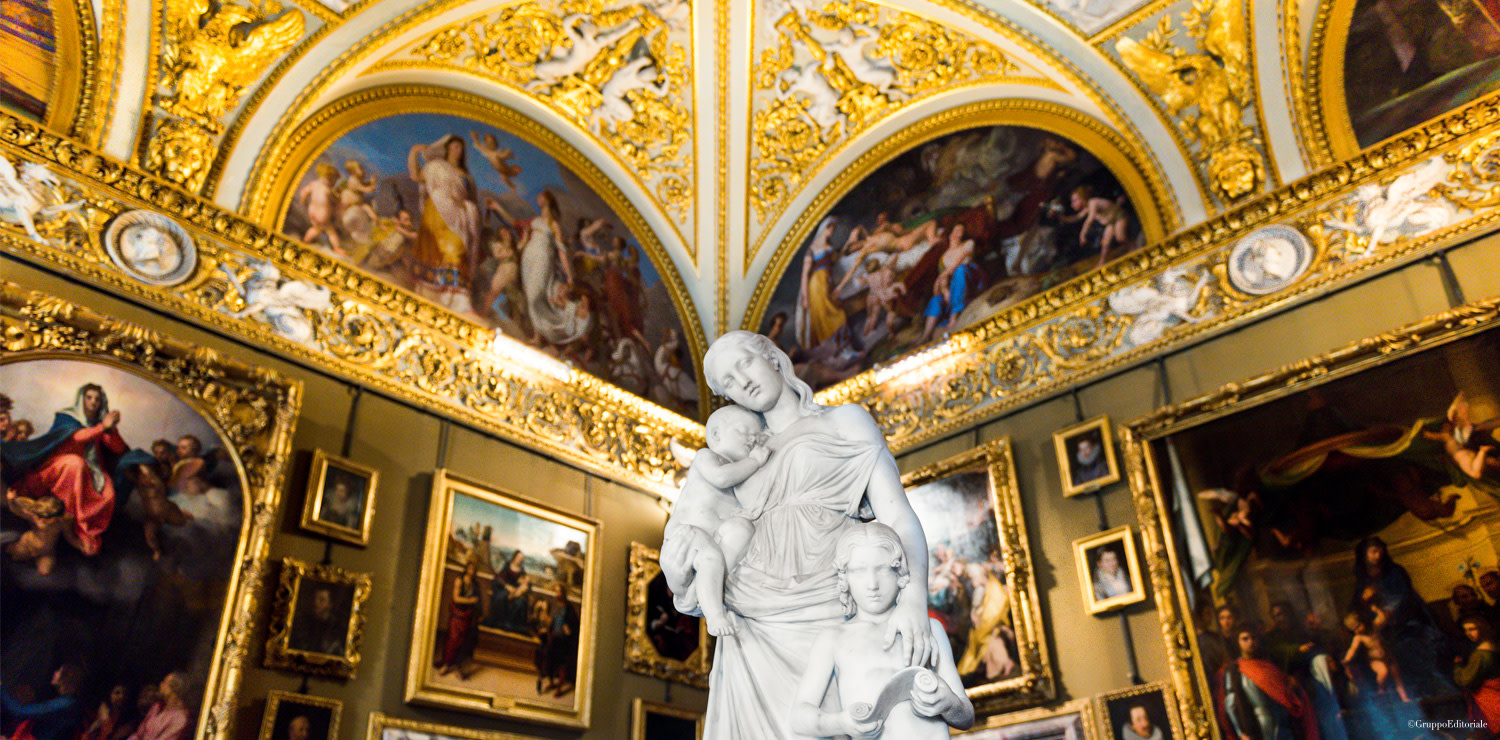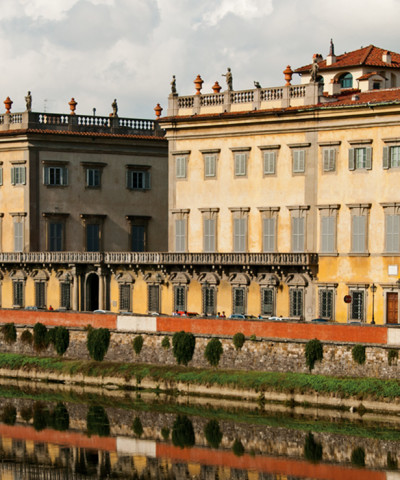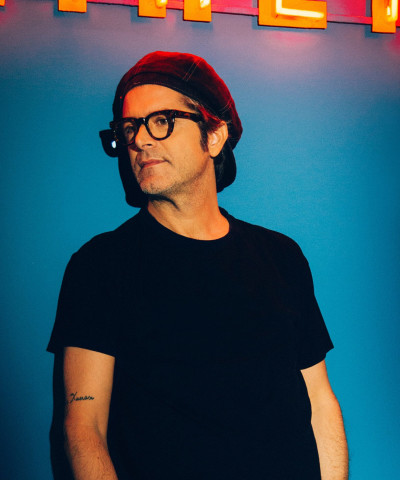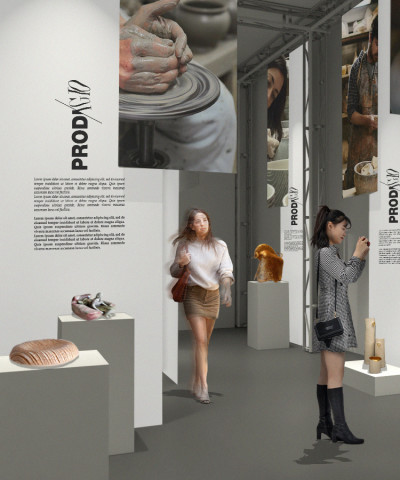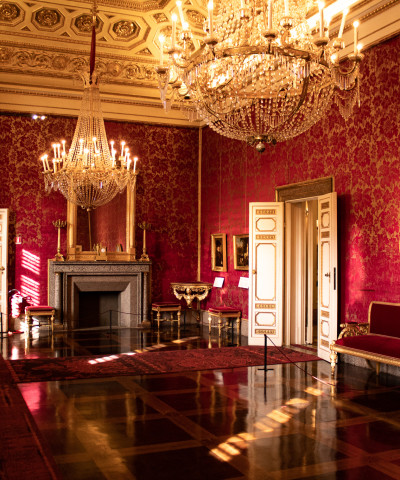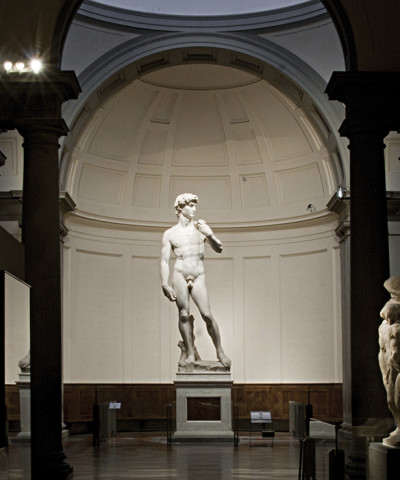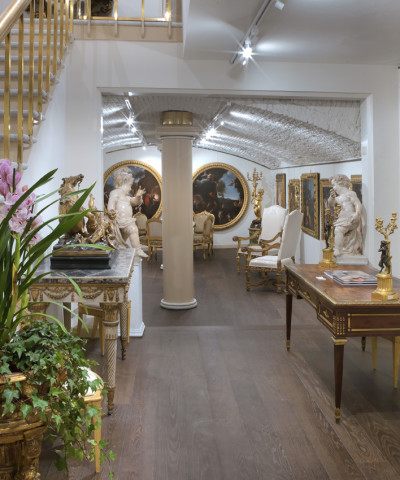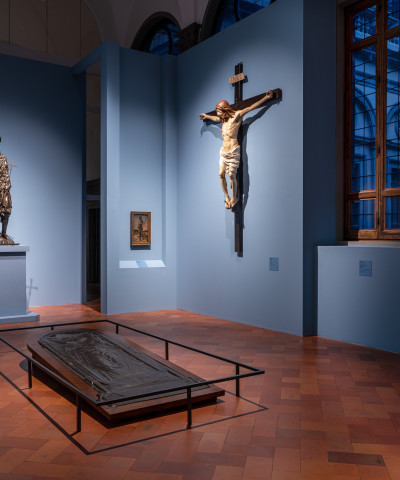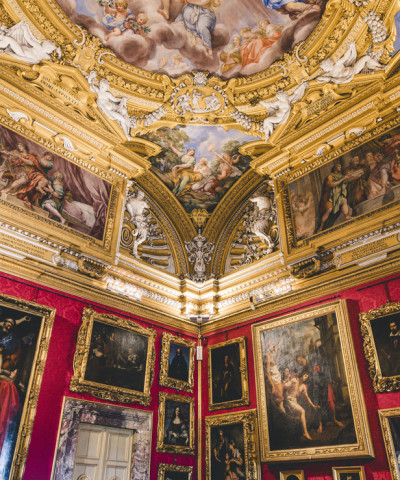Palatine Gallery, Vertigo
Eike Schmidt, director of the Uffizi Galleries and the Palatine Gallery
Palatine Gallery. Eight o’clock in the morning on a not-an-ordinary Tuesday: it is the day after the Maison Gucci’s fashion show right here in these rooms. Last night, Baroque at its finest, a profusion of pearls and Renaissance brocades, a symphony of cross-references with fashion evoking art and art inspiring avant-garde fashion. But this was yesterday… This morning, as if by magic, everything has gone back to its place: beauty exudes from the walls, it is not sinuously moving about the rooms on a soft yellow carpet. All the frills and glamorous guests have disappeared, for about an hour we savour the silence and the space, luxuries that can easily compete with last evening’s show.
We have been granted a third privilege: Eike Schmidt, director of the Uffizi Galleries, is our tour guide. We meet with him in the Saturn Room, near the entrance from which we catch a glimpse of the suite of rooms that follow. The main floor of Palazzo Pitti, which houses the Palatine Gallery, is stuffed with an amazing number of masterworks: pouring through the names of the artists or number of works is in no way comparable to the pleasure of admiring these intense colors, perfect faces, the delicate pose of the hands, the harmonious limbs which, painting after painting, fill our eyes. Even the Director, who is very familiar with such beauty, doesn’t seem accustomed to it and stands in awe before the seven magnificent paintings by Raphael hanging in this room.
Let’s start from here: every age has its star and during the years when the Palatine Gallery was being set up, the undisputed star was Raphael, before the discovery of Botticelli and the rediscovery of Michelangelo in the late nineteenth century. The Palatine’s painting collection - of late-Renaissance and Baroque art- testifies to the Medici family’s passion for art collecting, starting with Cosimo II, which was then carried on by the Lorraines. Palazzo Pitti used to house also the extraordinary collections of Vittoria della Rovere, the wife of Grand Duke Ferdinando II and the last descendant of the Dukes of Urbino, which included many paintings by Raphael and Titian.
The reforms carried out by the Grand Duke Leopold impacted also on the huge Medicean painting collections and it was quite roughly decided that some major early Renaissance and Renaissance works would remain at the Uffizi, while the rest was later moved to the Palatine Gallery, where the collection continued to be enriched. The Gallery was opened to the public for the first time in 1833.
The current arrangement of paintings reflects the original one as closely as possible and represents.
Italy’s most notable example of Baroque picture gallery, in which the paintings are not displayed in a linear way according to systematic or chronological criteria, but mainly according to decorative criteria, covering most of the wall’s surface in a symmetric pattern. The director points out some typical nineteenth-century tricks: the subtle sense of humour in the way the paintings are displayed, as if they were communicating with one another and not only with the viewer. He draws our attention to a little putto, placed near Raphael’s more famous Madonna, who seems ready to jump into the scene which celebrates the grace of the Virgin Mary with the Child in her arms whereas, hanging to the left of it, Dolci’s St. Rose of Lima, with her eyes looking up to the sky, seems turning to the opposite side.
An amusing scene which does not, however, distract our attention from the Madonna of the Chair by Raphael, one of the last tondi of the Tuscan sixteenth-century school. The painting is absolutely mesmerizing because of the bodies in perfect balance: the Infant Jesus, with his rounded and cherubic features, reveals his authoritative role through the elbow that seems putting some distance between himself and his mother, and Mary has a mercy-filled gaze which attracts and wins you over. The director, after having so vividly described the feelings that the painting evokes, underlines the beauty and modernity of the figures’ clothing and the Baby Jesus’s very life-like body.
A very poetic moment, with the summer light filtering through the shutters left ajar and gently caressing the painting, which is slightly tilted towards the light owing to the movable panel on which it rests. Another of the Lorraine family’s tricks: the paintings were placed on movable supports in order to turn them more easily towards the light source. All the most valuable works feature this kind of support.
Accompanied by Schmidt’s words, we go from room to room, from masterpiece to masterpiece. Before the Saturn Room, we visit the Iliad Room, decorated with frescoes by Luca Sabatelli and featuring, in the middle, the Madonna Enthroned and Saints by Rosso Fiorentino facing the statue of Charity the Educator by Bartolini. An all-female room, which includes the two Assumptions by Andrea del Sarto and The Pregnant Woman by Raphael.
After the Saturn room, here come the other rooms named after planets: the Jupiter Room or Throne Hall, showcasing Raphael’s portraits of Tommaso Inghirami and Cardinal Dovizi, and The Veiled Woman in her beautiful dress and head covered like a Madonna with a drop jewel hanging from her veil; the Mars Room, dedicated to the god of war, which reveals the Medici family’s taste for Northern-European art and the “diplomatic” art collecting carried on during the Grand Duchy’s time: to the right, Cardinal Bentivoglio by Van Dyck, and on the other wall The Four Philosophers and The Consequences of War by Rubens; the Apollo Room, dedicated to the prince’s youthful years, which showcases the Portrait of a Man by Titian, staring at us with his deep blue eyes and, last but not least, the Venus Room and the Room of Niches which contains the Medicis’ first statuary collection. While walking, the Director let us in on his plan: combining the highlights of the Uffizi Gallery and Palazzo Pitti in one single tour, a vertigo-inducing experience of beauty. It is nine o’clock, inattentive and flushed tourists start flocking in: might all this be too much? No, even the sublime can become familiar…






